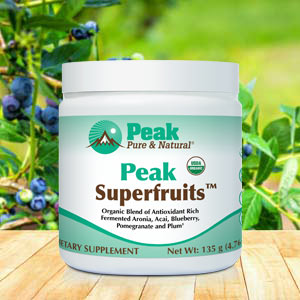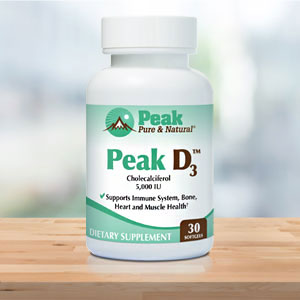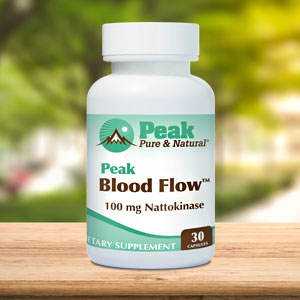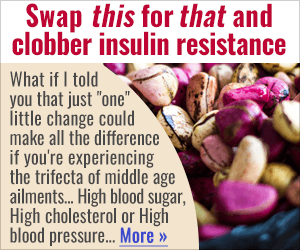Get Easy Health Digest™ in your inbox and don’t miss a thing when you subscribe today. Plus, get the free bonus report, Mother Nature’s Tips, Tricks and Remedies for Cholesterol, Blood Pressure & Blood Sugar as my way of saying welcome to the community!
7 skin changes that should never go unchecked

What’s the largest organ in your body?
If you said, “My skin,” good for you!
Most people don’t think of their skin as an “organ,” like their heart, liver or kidneys — but it absolutely is. What’s more, it’s the most vulnerable.
Think about it: your skin is like a shield between you and the pollutants, ultraviolet radiation, pathogens and toxins you encounter daily. But that’s not all…
When you sweat, that’s your skin regulating your body temperature and excreting waste products. Your skin also synthesizes vitamin D from exposure to sunlight — and that’s the only way to get this essential vitamin other than supplementing.
And what do you do for your skin in return? You might moisturize it during the winter and protect it from the sun during the summer — paying most of that attention to your face or exposed areas.
But if you had a serious skin problem, would you recognize it or know what to do? Here are seven unusual but significant skin symptoms that dermatologists say always warrant a visit to your doctor…
7 skin changes that require attention
A pimple that bleeds and won’t go away
You’ve had a small bump on your face for several months. It looks like a pimple, only without a head, and it bleeds without being touched. Never let something like this linger for months. It should be biopsied to make sure it’s not skin cancer.
If it is cancerous, Mohs micrographic surgery only removes a layer at a time, so you don’t end up looking disfigured. Each section removed is examined under a special microscope. A dermatologist will stop removing skin when the last piece excised shows no sign of “roots.”
But be warned: if it is a skin cancer, the longer you wait, the deeper the “roots” can go. It’s crucial to remove every bit of it, and if it’s been allowed to grow unchecked, that could definitely leave a scar.
Veins you can see
Factors like hot weather, tight clothing and strenuous exercise can make your veins more noticeable. But if you previously couldn’t see your veins and now they’re prominently noticeable, have your doctor take a look. It could be a sign of deep vein thrombosis. Other key signs include pain, swelling and warmth in the affected body part.
Strange marks on your nails
Believe it or not, your fingernails are often the best indicators that something is going wrong in your body. Here are three examples:
- Splinter hemorrhages. These crooked red lines resemble splinters under the nail bed and may indicate endocarditis (an often misdiagnosed heart infection that inflames the heart). Splinter hemorrhages occur when tiny blood clots associated with endocarditis damage the small blood vessels under the nail.
- Small red spots under the nail bed. These can be a sign of the autoimmune disease lupus.
- Also, a dark line running from top to bottom of the nail could be a sign of melanoma of the nail. Check the thumb, index finger, or big toe for this, and get a biopsy if you see any changes.
Skin changes that feel like velvet
Dark, velvety patches of skin might be a condition called acanthosis nigricans, which is often caused by insulin resistance that can lead to type 2 diabetes if left unchanged.
It often shows up in skin creases and folds on the neck, in the armpits, inside the elbows, behind the knees, and on knuckles–and is evidence that elevated insulin levels are speeding up skin cell reproduction.
Skin that glows or shines
A sudden, unnatural sheen to the skin could indicate hormonal changes, skin infections, or even skin cancer. Basal cell carcinoma usually appears in areas exposed to sunlight. It appears as a tiny translucent bump with blood vessels on the surface that may bleed. Basal cell carcinoma is highly curable if detected early. An Australian study found that supplementing niacinamide reduced basal and squamous cell carcinoma risk.
Itchy palms
If not due to dry winter skin, and if they flare up at night and are not accompanied by a rash, your itchy palms could signal gallbladder issues. To rule this out, it’s important to get blood work done to check your liver function and bile acids. Sometimes itchy palms may be a warning sign of pancreatic cancer.
Skin changes that feel like sandpaper
If your skin is so dry that it’s full of small, rough bumps like sandpaper, you could have a condition called keratosis pilaris, also called “chicken skin.”
The condition is not dangerous and can be treated with moisturizers and prescription creams. However, it could be an indication that you’re predisposed to atopic dermatitis, asthma, and seasonal allergies, so it’s good to identify it early.
Other conditions to watch out for include slow-healing wounds and new sensitivities to products that didn’t cause problems before.
When in doubt, always go to your doctor. “Better safe than sorry” is the rule of thumb here.
Editor’s note: Did you know that when you take your body from acid to alkaline you can boost your energy, lose weight, soothe digestion, avoid illness and achieve wellness? Click here to discover The Alkaline Secret to Ultimate Vitality and revive your life today!
12 Weird Symptoms Dermatologists Say You Should Never Ignore — Time















